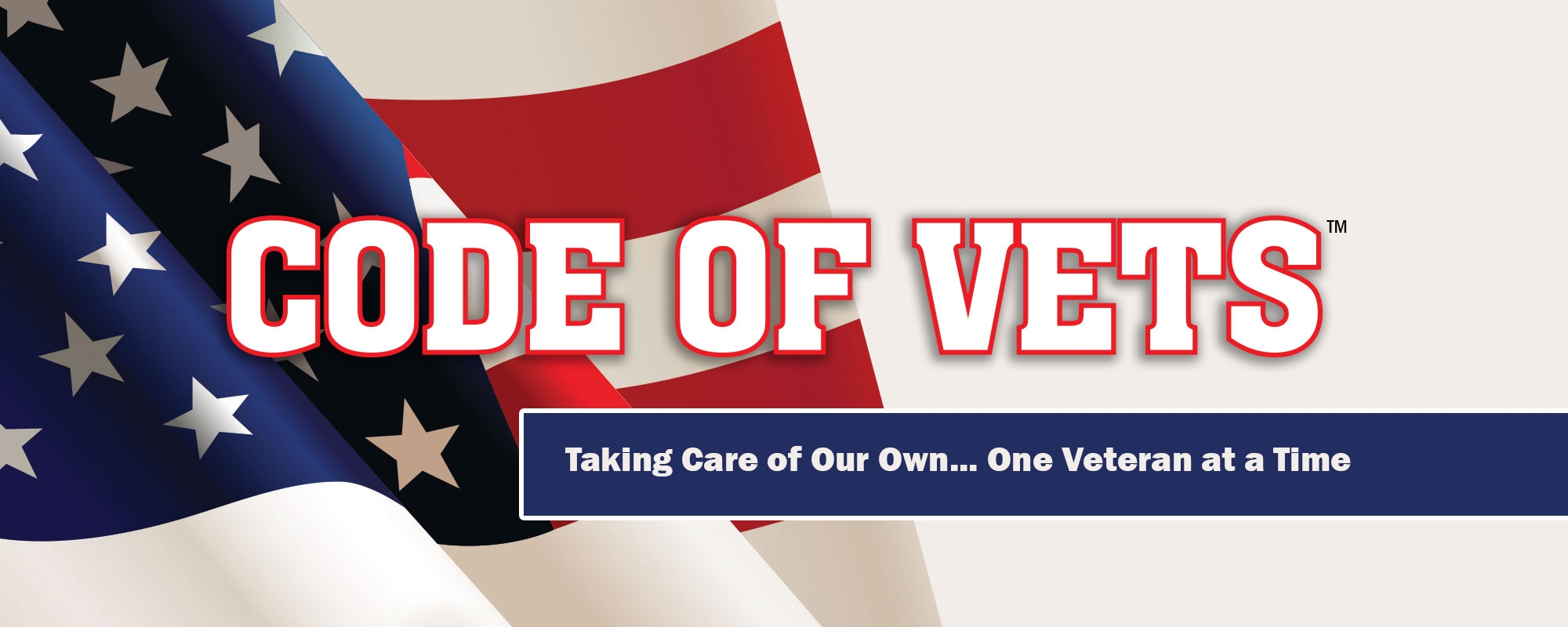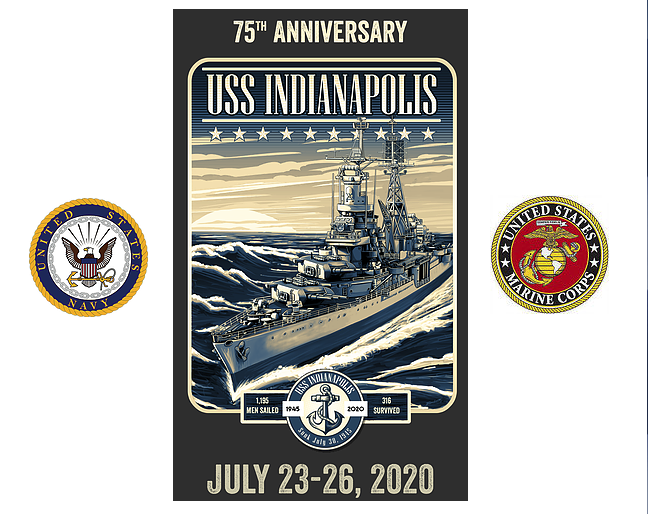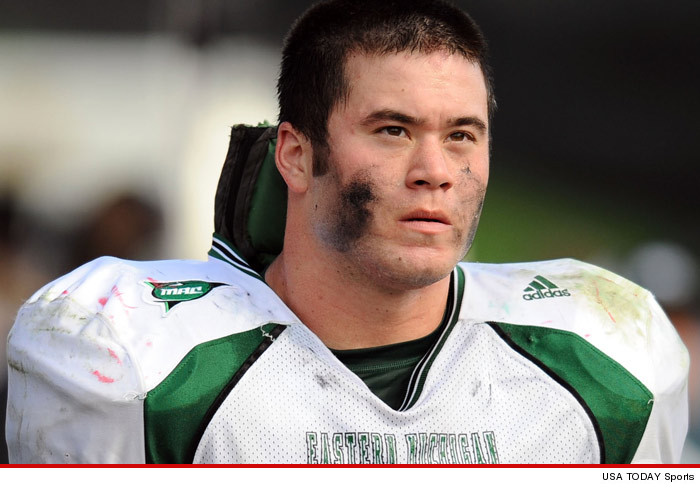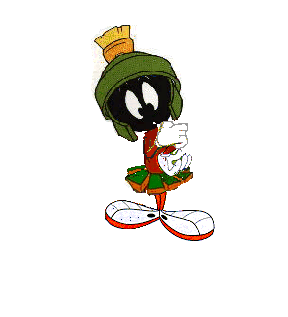Remembering the men of the USS INDIANAPOLIS (CA – 35) – Marine Corporal Edgar Harrell (United States Marine Corps 1943 – 1946)…born on the banks of the Tennessee River. Survior of the USS INDIANAPOLIS (CA – 35) sinking.
Saturday, 30 July 2011
WHAT PERSUADED YOU TO JOIN THE SERVICE?
I am sure that in many ways my background is no different than hundreds of thousands of other folks who grew up in our great country during the years of the depression and survived the horrors of World War II. I suppose we all developed a survivor mindset in those days of adversity. As I reflect upon those bittersweet years of blood, sweat and tears mingled with the joys of family, friends and faith, I must confess that I wish our country could go back to those times and recapture the core values upon which our nation was founded. Obviously that will never happen, but perhaps my humble story will remind readers of the eternal truths found in the Bible that once shaped our nation.
I was born in a small house near the banks of the Tennessee River on October 10, 1924 in a little western Kentucky community called Turkey Creek. I was the oldest son of a family of two sisters and six younger brothers. Life was simple back then, you either work or you starved and we had faith deeply rooted in the God of the Bible. My mom and dad did all they knew to raise their children for the glory of God.
Prior to the Japanese attack on Pearl Harbor, my family and thousands of others across our great nation had no way of knowing that wicked men across the sea had our great country in their crosshairs. We never thought that they even considered our safe little Kentucky farm a spoil of war. I’m sure we took our freedom for granted in many ways; after all, freedom was all we had ever known. But by the time I was a junior in high school the war in the Pacific was in full swing. With the decisive battle at Midway proving to be a turning point for the Allied Forces in the Pacific, and with the full realization that my home and family were in imminent danger, I felt compelled to do my part by volunteering for the Marine Corps.
I remember well those days of duty and honor and I felt proud to be able to serve my country. As I listened to our old Silvertone radio, it sounded as though the Japanese were ready to storm the beaches of California. All of those Pacific islands seemed much closer in my limited and naïve comprehension and I told myself “the Japanese must be stopped” and I was eager to volunteer for the task. This was a fight for freedom and for survival; it was a war where evil must be vanquished so justice and freedom could prevail. So with the soul of a patriot and the heart of a warrior, I committed myself to the Marines. Joining the service, or even being drafted, was an honorable undertaking. We never heard of protesters, draft dodgers, or flag burners. When the war broke out, patriotism swelled in America.
BRIEFLY, WHAT WAS YOUR CAREER PATH?
In the fall of 1943 I found myself enduring the rigors of boot camp in San Diego, California. Boot camp was tough and demanding, but I knew that if I kept my nose clean I would come out with flying colors. When I completed boot camp, I was sent to Sea School where I was later told that I would soon be assigned to a large combat ship. Somehow I knew then in my heart that God was up to something in my life far beyond my understanding. Far from the safety of my beloved Kentucky, I found myself alone in a world filled with dangerous unknowns, relieved only by the comforting truth of God’s promise, “I will never leave thee, nor forsake thee.”
In March of 1944 I was assigned to the USS Indianapolis, and this was to be my home until her sinking on July 30, 1945. I still remember my first impressions when I boarded the Indy. My initial thought was, “This thing is big, real big!” It was like a floating city. It was an absolutely overwhelming experience for a country boy from Kentucky. My first sight of the massive guns gave me goose bumps. Having never seen guns larger than a double-barreled shotgun, I remember laughing to myself thinking, “My, my, my. We can win the war just by ourselves with these monsters!” I later learned to operate both the 40 mm and the 5 inch guns. Since we had no foxholes in which to hide I soon realized that our training and our ability were our only protection.
DID YOU PARTICIPATE IN COMBAT OPERATIONS?
My first combat experience was at Kwajalein and Eniwetok in the Marshall Island chain. Our ultimate sights, however, were on Guam, Saipan and Tinian, crucial islands for providing a staging area for our new Boeing B-29 Super-fortress bombers to be able to attack the mainland of Japan.
From the Marshalls we moved on to attack the Western Caroline’s. There our carrier planes struck the enemy at the Palau Islands where they bombed enemy airfields, sank 3 destroyers, 17 freighters, 5 oilers and damaged another 17 enemy ships. The Japanese lost 160 planes during these battles, with another 46 destroyed on the ground.
On the 13th of June 1944 we moved on to the Marianas where the Indianapolis joined the pre-invasion bombardment group off Saipan. The Japanese were dug in deep on Saipan with their massive gun installations camouflaged and concealed behind trap doors on concrete bunkers. With the landing attack scheduled for June 15, Admiral Spruance maneuvered the Indianapolis in close enough to effectively superintend the attack. We were so close, in fact, that we experienced many near misses from the Japanese batteries. Fortunately, we were hit only one time by a defective shell that did not explode and caused only minor damage.
Under the cover of ferocious American bombardment, the 2nd and 3rd Marine Divisions launched their amphibious assault and met with stiff resistance when they came ashore. The well fortified Japanese bunkers were high above the beaches, capable of suddenly opening their massive trap doors, blasting our vulnerable boys below, and quickly concealing themselves again. Upon hearing the reports we knew the casualties of our Marines were high. However we dared not let our emotions rule us and the crew of the Indy fought on with great discipline, doing all we could do to support our vulnerable troops storming the beaches.
Desperate to relieve their beleaguered forces to the south in the Marianas, the Japanese launched a large fleet of battleships, carriers, cruisers and destroyers. Contrary to the “Tokyo Rose” propaganda that the Americans were running away from the massive flotilla of the Japanese Navy, Admiral Spruance ordered a fast carrier force to make haste to meet them head-on. Admiral Spruance was confident of victory knowing that the U.S. had 104 ships of various kinds and 819 carrier-based planes available in the theater of operation. On the other hand, estimates indicated that the Japanese had met with serious losses in the Pacific leaving them with only 55 ships and 430 planes. By then, the U.S. fleet had twice as many destroyers as the Japanese.
Our fleet met the enemy on June 19 in what was called the ‘Battle of the Philippine Sea.’ The Navy Department Naval History Division described it as follows:
“Enemy carrier planes, which hoped to use the airfields of Guam and Tinian to refuel and rearm and attack our off-shore shipping, were met by carrier planes and the guns of the escorting ships. That day the Navy destroyed 402 enemy planes while losing only 17 of her own. (The) Indianapolis, which had operated with the force which struck Iwo Jima and Chichi Jima, shot down one torpedo plane. This famous day’s work became known throughout the fleet as the Marianas Turkey Shoot. With enemy air opposition wiped out, the U.S. carrier planes pursued and sank two enemy carriers, two destroyers, and one tanker and inflicted severe damage on other ships.”
After the Marianas Turkey Shoot, the Indianapolis returned to Saipan in June to resume fire support for six days, we then moved on to Tinian to blast shore installations. Meanwhile, Guam had been taken, and the Indianapolis was the first ship to enter Apra Harbor since that American base had fallen early in the war.
For the next few weeks we operated in the Marianas area and then proceeded to the Western Caroline’s where further landing assaults were planned. From September 12 through 29, both before and after our landings, we bombarded the Island of Peleliu in the Palau Group. We then went on to operate for 10 days around the island of Manus in the Admiralty Islands before returning back to San Francisco to the Mare Island Navy Yard for repairs and maintenance.
In Dec. 1944 we welcomed our new Skipper, Capt. Charles B. McVay III. Unlike Captain Johnson who was all business in his military demeanor, Capt. McVay was more personable and enjoyed interacting with the men on a relational level. Johnson ran a very tight ship requiring many drills and General Quarters early in the morning. McVay, on the other hand, ran a looser ship, not requiring us to be “battle ready” all the time nor did he expect us to keep watertight doors closed and dogged when we were in forward areas. However, I never thought of him as being lax in any way. I served as a marine orderly for both of these fine captains and had a bit of firsthand experience with them.
With Capt. McVay now at the helm of the Indy, and our overhaul at Mare Island complete, we joined Vice Adm. Marc Mitscher’s carrier task force on the 14th of February 1945. There we played a vital support role as our forces attacked the installations in the “Home Islands” of Japan itself. The Indy gave support to the first air strikes on Tokyo since General Doolittle’s invasion in April of 1942 preparing the way for the bloody struggles at the landings on Iwo Jima.
The campaign around the Home Islands stands out in my mind. It was crucial for us to gain tactical surprise and we did so by traversing the Aleutian Island chains in terrible weather. I remember several occasions where I was at watch on the bridge during high seas. As the ship forged ahead, the bow would descend into the great valleys of water then plow into the banks of the frigid waves causing sleet-like sea spray to strike me with stinging force. Our mission was successful in the Home Islands campaign. Between February 14 and 17, the Navy lost 49 carrier planes while shooting down or destroying 499 enemy planes. Our task force sank one Japanese carrier, nine coastal ships, two Destroyer Escorts and a cargo ship. While this was going on, Japan was being systematically devastated every day by our Air Force.
With their homeland under attack and their war machine gradually being diminished, desperation fueled the beleaguered Japanese. They fiercely defended Iwo Jima, proving to be one of the toughest of all the islands for the United States to secure. It was estimated that approximately 21,000 Japanese troops inhabited the labyrinth of coral tunnels on the volcanic island. The Indy’s mission was simple—bombard them. We had the ability to fire over 500 rounds of 5-inch gun ammunition in less than six minutes, sending massive amounts of destructive flak as far as eight miles. The big 8-inch guns could lob 250-pound shells up to eighteen miles. The concussion from the 8-inchers was staggering. In fact, their enormous recoil would actually move the massive ship sideways in the water. We were also well equipped for close range warfare, such as kamikaze planes, with the firepower of our 40 mm and 20 mm deck guns.
Torpedo suicide planes were always a threat to our ships. I will never forget the day when one of these planes flew in low and horizontal trying to make its way across our bow. Like always, our mission was to shoot him before he could get to us. That particular day I was a fuse box loader on one of the 5-inch guns. I would place a 75-pound shell into a fuse box hitched up to what was called “sky aft radar.” This radar system would then relay the actual coordinates of the incoming enemy plane to the shell itself, instructing it to explode its flak precisely in front of the plane.
As the plane came roaring by from left to right, the 5-inch gun immediately to the left of my gun continued firing in its left to right range of motion until its rotation was complete. With its muzzle now approximately sixteen feet from where I stood, pointed as far forward as possible towards the bow of the ship, it fired again. The concussion of the blast was so powerful that it knocked me to the deck while I was still holding the 75-pound shell. It also dislodged my cotton earplugs causing them to fall out and quickly blow away in the Pacific wind. Though dazed by the explosion, God enabled me to get to my feet and load the shell. As it fired, the percussion of the blasts further damaged my unprotected ears causing temporary deafness and blood to run out of my left ear. While our efforts averted the enemy plane and our lives were spared, I permanently suffered a fifty percent loss of hearing in that ear which has advanced to nearly 90%.
By March 4 we joined the pre-invasion bombardment of Okinawa where we fired 8-inch shells into the Japanese beach defenses. We soon discovered that our 8-inch projectiles were glancing off the concrete pill-boxes like ricocheting bullets requiring us to move out further and thus lob the shells over and down on our targets – a strategy that proved most successful. In the seven days of fighting at Okinawa, the crew of the Indy shot down six planes and assisted in splashing two others.
One of those mornings in particular stands out to me. The ship’s lookouts spotted a single-engine Japanese kamikaze fighter plane diving vertically directly at the ship’s bridge. We immediately opened fire with our 20-millimeter guns. Although we hit the plane and caused it to swerve, the pilot was still able to release his bomb at the last second and crash his plane on the port side of the after main deck. The plane toppled off the ship and fell into the sea causing little damage to the surface of the ship. The bomb, on the other hand, tore through the deck armor, the mess hall, the berthing compartment below and the fuel tanks in the lowest chambers before crashing through the bottom of the ship and exploding in the water underneath us. It was a miracle that we only suffered moderate damage. The official Naval report indicated “the concussion blew two gaping holes in the ship bottom and flooded compartments in the area, killing nine crewmen.” Although the Indianapolis settled slightly by the stern and listed to port, there was no progressive flooding; and the plucky cruiser steamed to a salvage ship for emergency repairs. There, inspection revealed that her propeller shafts were damaged, her fuel tanks ruptured and her water-distilling equipment ruined; nevertheless, the battle-proud cruiser made the long trip across the Pacific to the Mare Island Navy Yard under her own power.
It was a relief to come back to Mare Island and leave the Pacific front. The break from combat was welcomed but short-lived. Suddenly, while at Hunters Point in San Francisco, we received word that all leaves were canceled. Despite the fact that the Indy was not fully repaired and tested, we were ordered to get underway immediately. Not knowing what was going on, we boarded and quickly followed orders as we loaded last-minute provisions. My curiosity was fueled even more when my Marine Captain Parks ordered me to station guards around the mysterious cargo that had been brought aboard. A large crate, measuring about five feet high, five feet wide, and perhaps fifteen feet in length was hoisted onto the port hangar off the quarter deck. After stationing guards around the mysterious container, I immediately proceeded to obey my orders and do the same for another curious piece of cargo brought aboard and placed in a compartment on the upper deck reserved strictly for Officers. Inside the room was an ominous-looking black metal canister that a couple of sailors had brought on board dangling from a metal pole hoisted upon their shoulders. The cylinder was about two feet long and maybe eighteen inches wide and was padlocked in a steel cage that had been welded securely to the deck floor. I later discovered that when the black canister was aboard the transport plane, it had its own parachute. We also later learned that our cargo consisted of the integral components of the atomic bombs that would be dropped twenty-one days later on Hiroshima and Nagasaki, code named, “Little Boy” and “Fat Man.” After delivering our secret cargo to its destination at Tinian Island, we picked up our sailing orders at CINPAC in Guam, which were to take us from Guam to the Philippine Islands in preparation for the main invasion of Japan that was to have been in November 1945.
Three days out of Guam we encountered a Japanese submarine by the name of I-58. LT Commander Hashimoto fired a spread of 6 torpedoes, hitting us with two. The ship went down in 12 minutes resulting in only about 900 of the 1197 crew managing to abandon ship, leaving some 300 to go down with the ship. After 5 days only 317 would be found alive. This would be the largest casualty at sea in the history of the U S Navy.
FROM YOUR ENTIRE SERVICE CAREER WHAT PARTICULAR MEMORY STANDS OUT?
As I abandoned ship that night I joined a group of about 80 men to experience a hellish nightmare of swimming for 4-1/2 days in a kapok life jacket with the sharks. By the third day at noon there were only 17 still alive. Knowing the horrors of being plagued by sharks, hypothermia, fatigue and salt-water hallucination, and the crew’s heart wrenching struggle to survive the greatest catastrophe at sea in the history of the U S Navy, plus the loss of 880 of my shipmates, leaves me with lasting, horrible memories.
WHICH INDIVIDUAL PERSON FROM YOUR SERVICE STANDS OUT AS THE ONE WHO HAD THE BIGGEST IMPACT ON YOU…AND WHY?
I knew Captain McVay only as any non-com might know his superior officer. Even so, I saw him up close as his orderly and thus saw a man that was in command yet kind, down to earth, humble and very patient. To then see the gross miscarriage of justice and the cover-up that led to the bizarre court-martial and the eventual exoneration of a distinguished Navy Officer leaves me with sadness but still so respectful of the man.
WHAT PROFESSION DID YOU FOLLOW AFTER THE SERVICE AND WHAT ARE YOU DOING NOW?
For 35 years I was a Distributor for the Pella Window Co. in Rock Island Illinois covering Eastern Iowa, Southwestern Wisconsin and Western Illinois. I sold the business in 1985 and retired somewhat until my book “Out of the Depths” came out in 2005. Since then I have been in some 26 states telling the USS Indianapolis story, proving the miscarriage of justice on the part of the Navy, plus telling of the Providence of God that brought me through those terrible days. I thank the Lord each and every day for that experience and for these extended 85 years to tell of His Providence in my life.
HOW HAS SERVING THE ARMED FORCES INFLUENCED THE WAY YOU HAVE APPROACHED YOUR LIFE AND CAREER?
The one thing that was confirmed and made a part and parcel of my life was the love of my Country and my fellow man. Today I recognize the futility and the necessity of war, yet I have a strong desire for peace. However I dare not be complacent and let my guard down because there are those who do not sympathize with my views so I stand ready to defend them.
HOW HAS TOGETHERWESERVED.COM HELPED YOU TO MAINTAIN A BOND WITH THE SERVICE AND THOSE YOU SERVED WITH?
Through TWS I have made many friends of both WW2 and the much younger generation that have so faithfully followed. It’s sad to say however, that my generation is just about gone so I can only pay my respect and praise to the present torchbearers.
~~~~~
[Editors note: Additional information on the history of the USS Indianapolis disaster and the court-martial/exoneration of Captain McVay is available at this link; http://www.ussindianapolis.org]
[Editors note; Information about Cpl Harrell’s book “Out of the Depths” is available at this link: http://www.indysurvivor.com]
~~~~~














